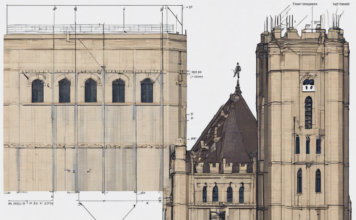Traffic signs or street signs are there for guiding and warning drivers, assisting in regulating the smooth flow of traffic among pedestrians, vehicles, bicycles, motorcycles, and others traveling on the highways, streets, and roadways in the U.S.A. According to Wikipedia, road signs in the United States are standardized predominantly by federal regulations. All street signs, traffic signs, parking lot signs, and construction signs are for communicating a simple and clear message. Street signs should look prominent and be highly visible to command the attention of drivers and passersby. They should be strategically placed, so that the drivers get enough time to respond spontaneously to the command. Street signs often serve as a warning to street users for ensuring that they are safe and secure from all sorts of potential driving hazards.
Role of Colors in Street Signs
All street signs have a particular color associated with them. The color of street signs may convey what the specific street signs are all about. Here are some street or traffic signs and the colors associated with them.
Red: Red street signs are for situations where drivers or pedestrians must yield or stop. Yield Signs and Stop Signs will be using red, however, other street signs, for instance, Wrong Way or Do Not Enter Signs may use red color. Other instances of street signs using red are No U-turn signs, No Turn, and often No Parking signs.
Green: Green street signs often are used as direction signs. Green is for names of streets, mile markers, exit signs, or street signs demonstrating directions to a specific city or even showing the distance to a particular place.
Blue: Blue street signs are not regulatory street signs. They are for displaying services for travelers. Blue signs are usually used on highways and expressways, guiding motorists to tourist sites, rest areas, hotels, hospitals, restaurants, gas stations, picnic areas, campgrounds, and other crucial services required by motorists. Personalized street signs may be used for the purpose.
Yellow: Yellow is used in general warning signs for indicating potential hazards or any change in road conditions, coming up. For instance, yellow street signs may be used for warning you about a narrow bridge coming up, a no-passing zone, a railroad crossing, a dead-end, a pedestrian crossing, an uneven surface, a dead-end, or even a hidden crossroad, and other potential safety issues.
Some Shapes in Street Signs
Octagon Street Signs
A street sign that is octagonal in shape will always be a Stop sign. You have to stop or come to a halt at an intersection that is controlled by the Octagonal sign. You need to halt at precisely the stop line before you enter the crosswalk or come to a halt even before your car enters the intersection. You may allow pedestrians or other cars to pass in the event; they are on your path.
Equilateral Triangle Signs
Equilateral triangular signs are for yield signs. Focus on yielding the right way. You need to slow down and allow vehicles to pass if they cross your path. You may consider stopping by before going ahead if required. You may have to stop and wait if pedestrians are entering the crosswalk. Let them cross the roadway then you may proceed.
Diamond-Shaped Street Signs
Diamond-shaped street signs are utilized as warning signs. These street signs alert drivers and pedestrians about special road hazards coming up. Pictures or words on the street sign will demonstrate the reason you need to use extra caution or slow down.
Conclusion
It is important to know all the road signs for maintaining road safety. Knowing the underlying meaning of road signs may prevent hazardous accidents.






